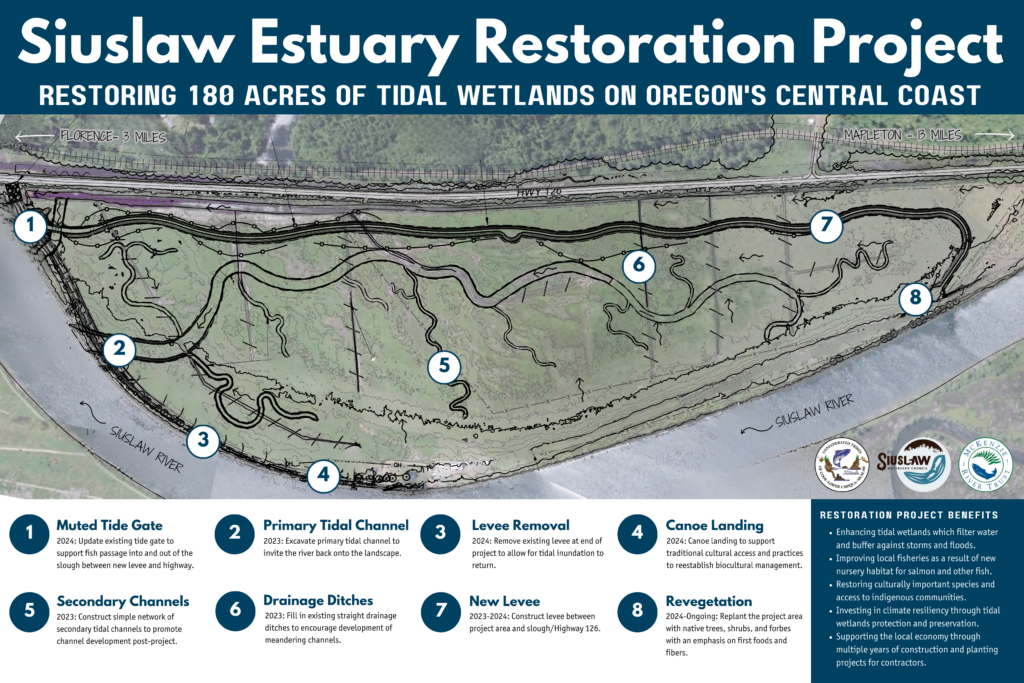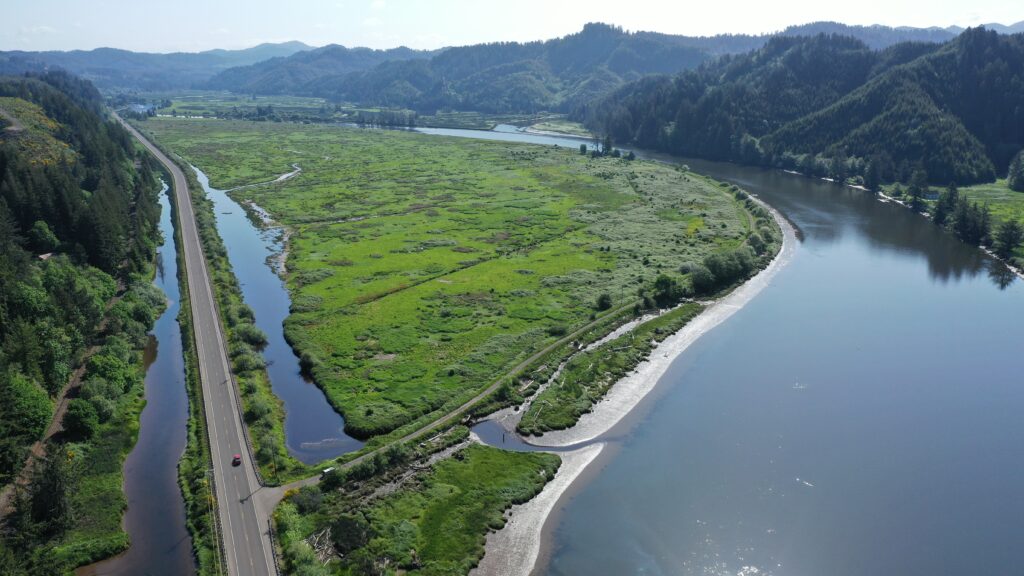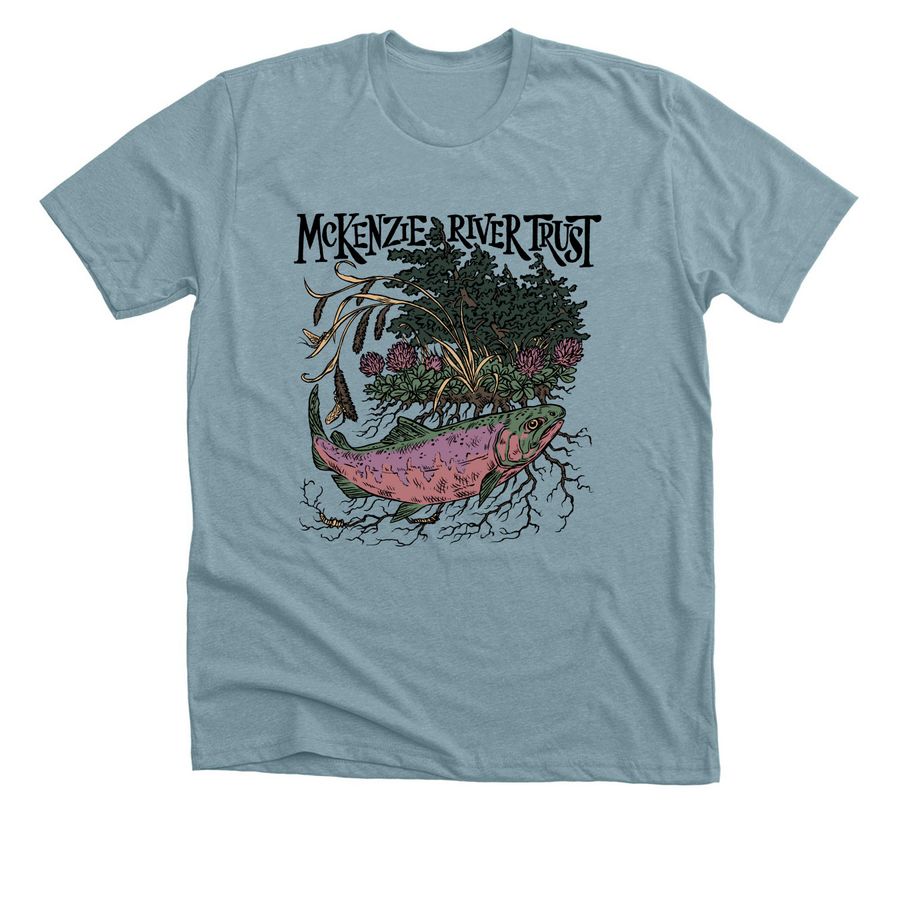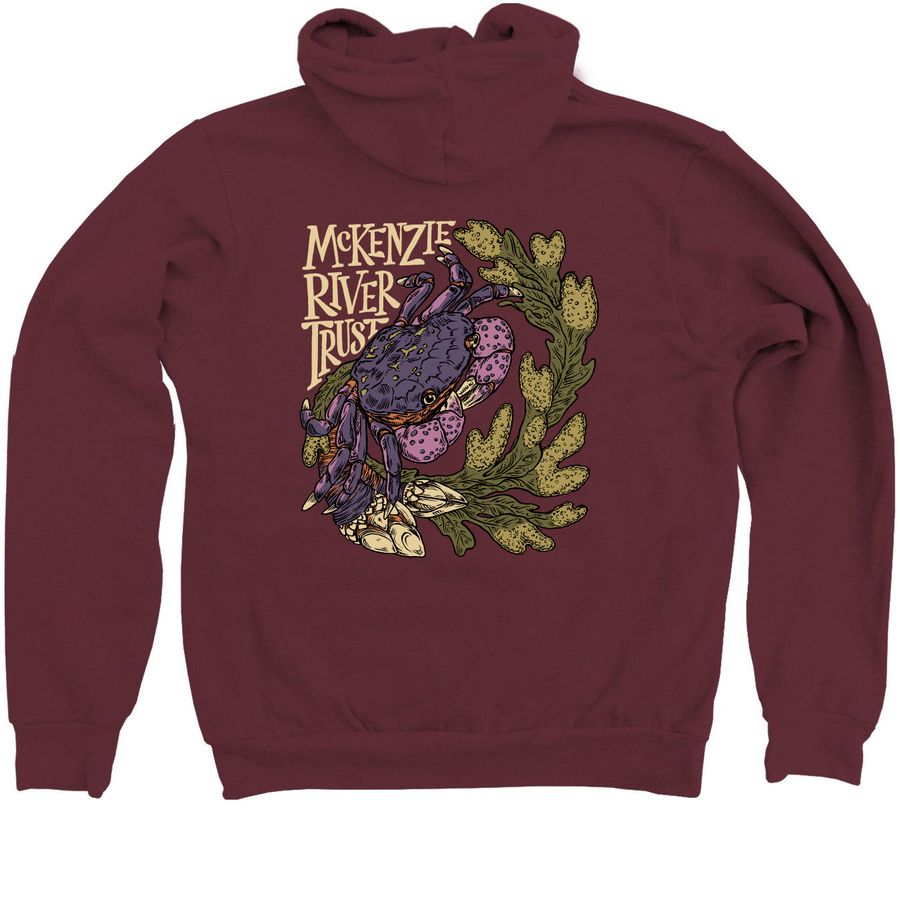A decade after McKenzie River Trust purchased 217-acre Waite Ranch in the Siuslaw Estuary, a group of partners are breaking ground on a large-scale restoration project. Led by the Confederated Tribes of Coos, Lower Umpqua, and Siuslaw Indians (CTCLUSI), the project will improve salmon and shorebird habitat, contribute to regional climate resilience, and provide a place for local Tribal citizens and families to celebrate and promote Indigenous culture on their ancestral lands.

Jesse Beers, Cultural Stewardship Manager for CTCLUSI shares that his Tribe has been involved in many restoration projects within their ancestral lands; however, this is the first time that, working with partners, the place will be restored in a completely holistic way. “For the Tribe, part of restoration is not only restoring the place but restoring the culture that had maintained or stewarded it for thousands of years. A restored place is not a wilderness but a place that is healthy for all the people, whether they have fins, legs or are microscopic.” This will also be the first time the Tribe restores a place name for a restoration project. To restore not only the ecosystem and the culture that stewarded it but also the original language.
The restoration project will take place over two summer seasons and include restoring roughly 200 acres of estuarine wetlands just a few miles upstream from Florence, OR. Among some of the most biologically and economically productive ecosystems, estuarine wetlands provide critical habitat for salmon and other fish species. Since the 1850s, nearly 70% of Oregon’s outer coast estuarine habitat has been lost to land development, directly contributing to the decline of salmon and steelhead abundance on Oregon’s coast. Through the restoration, critical salmon nursery and graduation habitat will become available to support this iconic northwest species in a basin that was closed to fishing in 2022 due to low returns.
Executive Director Rosemary Pazdral, from the Siuslaw Watershed Council, reflects that, “Salmon and people, and the innumerable connections between them, have been a part of a healthy Siuslaw watershed for many thousands of years. Restoring natural tidal processes to this land increases the habitat available for salmon to thrive in, and the space for people to restore and sustain connections to all life in the estuary.”
In 2010, McKenzie River Trust purchased the property that was historically a forested tidal swamp turned dairy farm. Since that time, partners from across the Siuslaw Basin have come together to design, engineer, and now implement the project.

McKenzie River Trust Executive Director, Joe Moll shares that “Since first purchasing this property in 2010, we have always seen the incredible potential for reconnecting the estuary here. Through building partnerships with nonprofit and Tribal partners as well as state and federal agencies, we’ve had the opportunity to expand our organizational understanding of what the word ‘restoration’ can mean not only for a place but the people who call it home. The strength of these relationships between people and place is what will ensure the work we do today is tended for generations to come.”
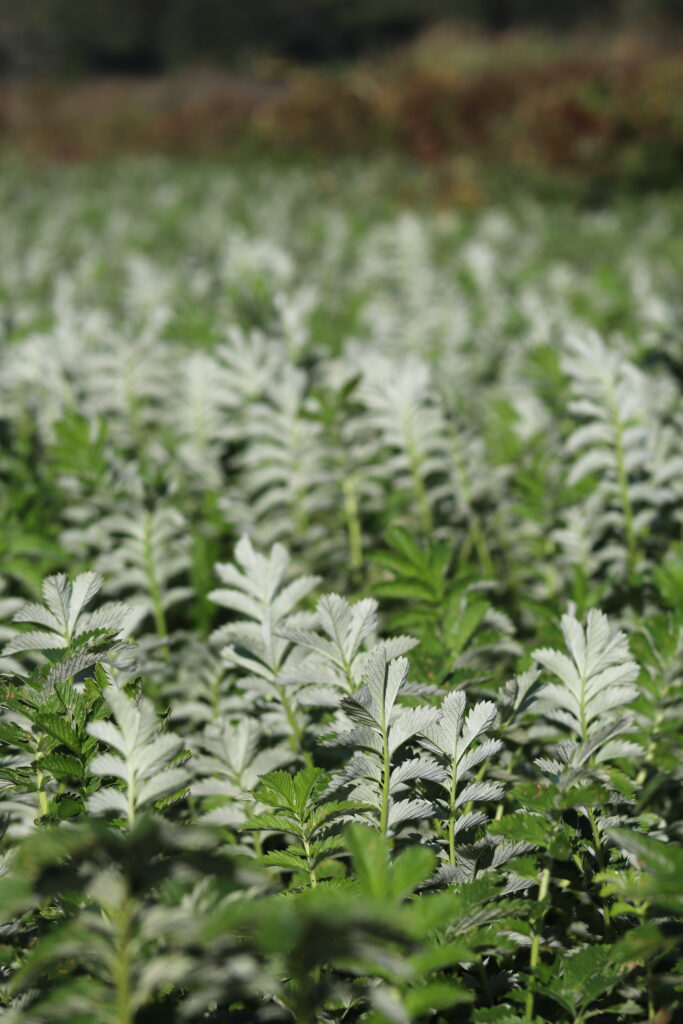
Led by the Confederated Tribes of Coos, Lower Umpqua, and Siuslaw Indians with staff support from the Siuslaw Watershed Council and McKenzie River Trust, the project will take place in two phases, the first of which will run through early September of this year. Restoration Project Manager with CTCLUSI, Kyle Terry, shares that people utilizing Highway 126 shouldn’t anticipate much disruption to their commutes, but they will see a lot of activity on-site over the summer. “This summer, contractors will use large equipment to fill in existing drainage ditches, excavate meandering tidal channels, and construct a new setback levee. The removal of the existing levee along the riverbank and actual tidal reconnection are not planned until later in the summer of 2024. The configuration of the new setback levee will allow roughly 180 acres of the property to be reconnected to higher tides while still protecting neighboring properties including Highway 126.”
Funding for the project was secured through the America the Beautiful Challenge and administered through the National Fish and Wildlife Foundation. This funding was generously matched with dollars from the Native Americans in Philanthropy foundation who provide conservation funding for Tribal Nations. Additional funding was provided through the National Oceanic and Atmospheric Association’s (NOAA) Pacific Coast Salmon Recovery fund.
Given the property’s location and associated infrastructure improvements, partners look forward to welcoming the public onto the site through volunteering, educational programming, and guided events and tours once work is complete.
